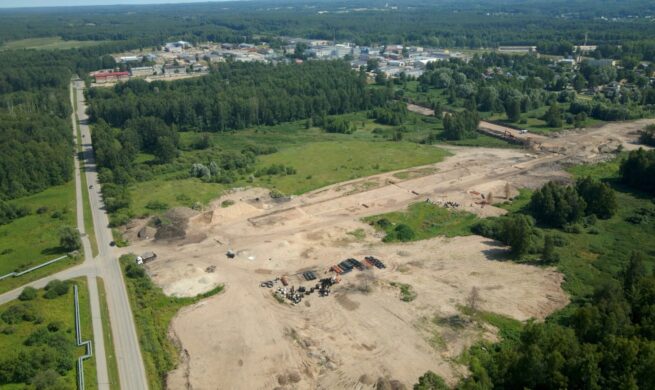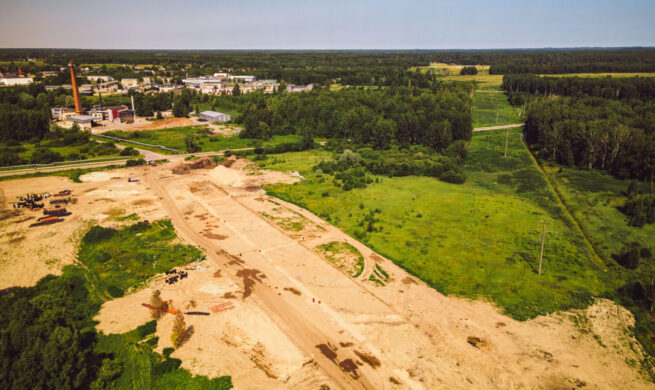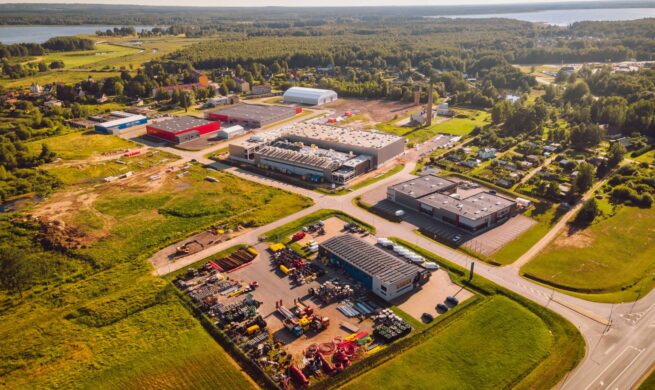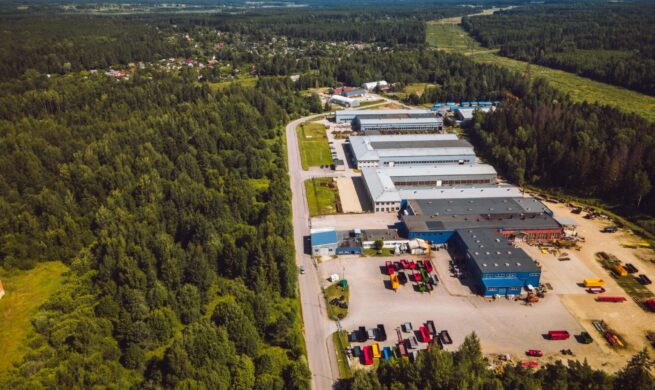The Vision Zero is achieved by increasing traffic safety and creating safe solutions for roads.
“Our mission is to eliminate all fatalities and injuries related to traffic accidents while also expediting the wider use of self-driving cars in order to ensure higher road safety,” said Mart Suurkask, CEO of Bercman Technologies, which produces smart pedestrian crosswalks and trades on the Tallinn Stock Exchange. Suurkask added that he hopes to see the number of deaths and injuries halved within five years in Estonia.
Allan Lahi, the founder of the startup e-Pavement, believes that the number of traffic accident fatalities could be brought down to zero in ten years. “Even one traffic accident death is too much,” Lahi notes.
CEO of Teede Tehnokeskus Taivo Möll agrees with him. “Our awareness has increased,” he said. “The development of automotive safety and driver assistance systems that correct errors or oversight and intervene at critical moments has contributed a lot to road safety.”
Technology gets the parties to interact with one another
The companies’ CEOs see the development of self-driving cars and technology as a whole as a factor that will tremendously increase traffic safety. “They will significantly diminish the human’s role in the human-vehicle-road system,” Möll explained. “I hope that the vehicles in Estonian traffic in ten years are capable of communicating with each other as well as with the infrastructure – this would help bring fatalities down to a one-digit number,” Suurkask added.
Möll notes that using IoT technology fosters the exchange of information between vehicles, road users and roads. “The sensors that gather the necessary information consume little energy, are very compact, can communicate with one another and forward information from every corner of Estonia,” he explained. “Another point to consider is their price level: if we compare it to the traditional traffic monitoring systems, we can place more sensors for the same price and exactly where they are needed. This will definitely impact traffic safety in the future – data will become more accessible and decisions will be more informed both for road users and road owners.”
He is convinced that roads, vehicles and road users will be communicating with one another even more within the next ten years. “If one car detects that the road is icy via its various sensors, it will also inform the others,” Möll noted. “A good example of this are the smart pedestrian crosswalks that are being developed in Estonia. The sensor systems installed on the pedestrian crosswalks warn approaching vehicles about pedestrians crossing the road and the driver assistance systems can stop the car if the driver doesn’t for some reason.”
But Möll would like to see traffic signs that change based on the data they receive on major roads. “This would make it possible to change speed limits according to road conditions – another step towards road safety,” he states.
Möll added that Teede Tehnokeskus has begun to create a network of mini-weather stations based on IoT technology in Estonian cities to receive information about road conditions and other weather conditions that can affect road safety. “We have installed stations in Tallinn and Rakvere and we will add more of them in the near future,” he noted. “What is for sure is that the technical solutions to achieve Vision Zero are developing at an enormous rate and we will certainly see its positive impacts in the next ten years.”
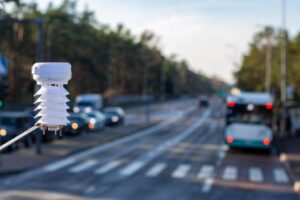
Road surface as the key to safety
Teede Tehnokeskus is conducting a traffic behaviour monitoring study, based on which they will develop various solutions and services. “We have developed a method to manage traffic control devices that can change the highest allowed speed limit on the Estonian national roads according to the road conditions,” Möll told. “We have installed radar speed signs that warn people about their excessive speed throughout Estonia.”
Teede Tehnokeskus is also working on prognostic models predicting icy conditions on roads during the winter. “We have created the website tik.teeilm.ee for gathering all the necessary information for road maintenance during winter, including predictions of road conditions,” Möll explained. “This information service is mainly intended for road maintenance companies and road owners so that they can perform de-icing where it is needed and before the roads become slippery.”
Teede Tehnokeskus uses open data from various sources and data from sensors to develop their prognostic models. “We can calculate the conditions on the road surface using our models up to 48 hours in advance,” Möll says. “At the moment, we predict road conditions in Estonia, Latvia, Lithuania and Finland, but if needed we can also offer predictions globally. Changing the focus to preventative de-icing will make our roads much safer during the winter – many dangerous situations will not occur.”
The data available in Teede Tehnokeskus’ system and/or the predictions also show if a section of the road will still not meet the standards in three hours, for example. “Then our system automatically generates warnings that are sent to whoever is responsible for the road maintenance in this area and who can complete the necessary preventative tasks,” Möll explained. “Thanks to this, road maintenance during the winter will become more accurate and we can prevent unexpected iciness on the main roads as well as in cities.”
They are working with Lux Express to monitor road conditions. “With the help of the Transport Administration, we have equipped nine intercity buses belonging to Lux Express with road sensors which give us regular real-time data about the road conditions,” Möll explained. “We also display pictures of the roads taken by the front cameras of the buses on our website, thus the buses have also become mobile road cameras. Buses that drive on a specific route within a specific interval are good platforms for gathering data.”
International cooperation and smart pedestrian crosswalks
Bercam Technologies is working globally to prevent and recognise conflicts between vehicles and pedestrians. “We develop and bring to the market physical and digital products and services that help to increase the safety and quality of traffic and our environment,” Suurkask noted.
This is achieved in cooperation with the University of Hamburg and the Artificial Intelligence Centre Hamburg (ARIC). Invest Estonia’s representative in Germany Riina Leminsky commented that Bercman Technologies reached out to their Hamburg office with the aim of getting in touch with possible partners. “I introduced them to ARIC and in cooperation with them, they developed a joint project called NATIC GmbH,” Leminsky said. In addition to ARIC, the University of Hamburg is also part of this project.
They are also developing the prediction capabilities of crosswalks in edge cases. “The project was financed by the German government and is an important step in entering the German market, receiving additional investments and continuing our cooperation,” Leminsky explained. “Bercman’s project can also become a stepping stone for other companies to develop business relations with Germany.”
Bercman Tehcnologies’ success in Germany so far is not limited to the University of Hamburg and ARIC. The public limited company also received financing for their project Smart Walk from the Federal Minister of Transport and Digital Infrastructure in Germany. Bercman’s own share in the project was 100,000 euros and they are using it to develop a smart traffic sign that would detect dangerous situations.
E-Pavement is also contributing to the development of pedestrian crosswalks at the Estonian level. “Our existing solutions are mainly directed at pedestrian crosswalks,” Lahi explained. “They enable the pedestrian and the driver to better perceive when the pedestrian is about to cross the road via an unregulated crosswalk.” He noted that this is especially important during the dark and rainy season when pedestrians’ dark clothing makes them hard to notice for the drivers.
Additionally, the regulated crosswalk solutions created by e-Pavement display traffic lights in the waiting areas of crosswalks. “This is especially important for pedestrians who usually use mobile devices when walking,” Lahi noted. “Colour-blind people can better differentiate between the traffic lights.” Lahi also hopes to develop an application that would give the driver colour signals about the safety of their driving speed.
Thus, high technology solutions are the key to increasing road traffic safety and significantly decreasing the number of fatalities. Many Estonian companies are working hard to develop these solutions, whether that’s creating safer pavements, smart pedestrian crosswalks, self-driving cars, smart weather stations based on IoT solutions or creating a synergy between all the abovementioned technologies.
Read more about Estonia’s IT sector here. If you wish to do business with us feel free to send us an e-consulting request to get more detailed information.
